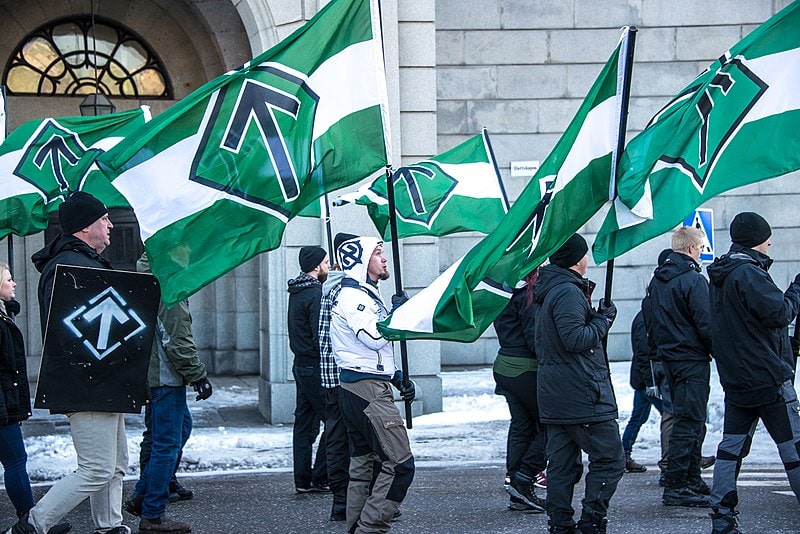Iconography, from unit insignias, militia badges or even hate symbols, play an important role in warfare and security. Around the world, new symbols rise and fall to signify different movements and groups, yet some endure. Nordic iconography and symbols have found themselves co-opted, adapted, misinterpreted and given entirely different meanings by modern far-right movements.
In the Western world, as right-wing political extremism continues to rise, splinter and change, old symbols emerge. These symbols include more recognizable, co-opted iconography, like the swastika, the Sig rune and the increasingly common Black Sun. Other runes and symbols of the ancient Nordic past have continuously been taken by movements claiming them as their own.
To better understand how these symbols are tied to these extremist movements, we have to look both at the origin of the symbols themselves, and the changed meaning assigned to them.
1. Ancient Symbols, Ancient Meaning
The usage of runes and Nordic iconography by extremist far-right movements is nothing new. Co-opting of Nordic runes reached its height during the reign of the Third Reich during the 1930s and 40s, but the runes and other symbols, as well as their eventual connection to far-right movements, date back far earlier.
To truly understand how so many symbols, especially ones so rooted in ancient mysticism, became cornerstones to one of the most devastating political ideologies ever, one must return to the late 19th century. Germany, for a very long period of time, was not a unified state. Its unification under the First Reich under Otto von Bismarck caused profound changes to Germany’s ethnic and national identity.
The rise of the Volkisch movement, one essentially translating to “ethnic-popular” or very simply “folk”, would foster a mindset of widespread ethnic unity and cultural commonality among the German people. (Source) This, paired with the rise of the Darwinian theory being applied to politics via concepts of “social Darwinism” and nationalism in general, established the perfect bedrock for Nazism. Nazism on one hand saw itself distanced from religion, yet had its own widely mystic and esoteric aspects. It particularly drew from Ariosophy, which increased German exploration of occult and pagan beliefs and symbology. (Source) These movements would tie the Germanic people to the Nordic people, and begin the solidification of concepts of racial and ancestral purity.
The events of WWI further fanned the flames of nationalism in Europe, and Germany’s subsequent defeat would cause more extremist groups to take hold. By the time the National Socialist party rose to power, much of the German political and social ideology at the time was more prepared to accept the coming integration of Nordic iconography and much more, into the greater Nazi ideology. The simultaneous rise of authoritarian and totalitarian ideology, created the environment for these ideologies to be established, disseminated and eventually enforced across German society.
2. Runes
Nordic runes are among the more recognizable co-opted symbology by far-right extremist groups. Though used by ancient Nordic peoples to symbolize connections to their land, people and gods, these symbols would soon become synonymous with a movement so destructive, that it would fundamentally change their perceived meaning.
The Sig rune is perhaps the most insidious of these co-opted symbols. It is recognizable as the infamous double-lightning symbol of the Waffen SS. (Source) Though originally being used by Old Norwegian and Old Icelandic religions to mean simply “sun”, Anglo-Saxon translation and direct change of meaning by the Nazi part, changed the symbol to mean “victory”. (Source) The word “Sig” itself is easily pronounced “sieg”, forming the first part of the Nazi salute “Sieg Heil”, making it not only symbolically, but also etymologically significant.
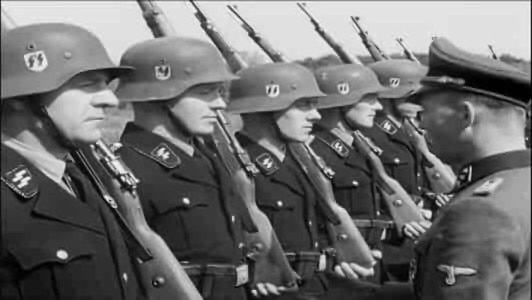
The Waffen SS would, in its various military divisions, co-opt other Nordic iconography as well as Celtic iconography for unit logos. The Sonnenrad (a symbol that is experiencing a massive modern resurgence), as well as the Odal and Tyr runes all, were featured in the logos of the Nordland, Nederland and 30. Januar SS divisions respectively. (Source)
3. The Swastika
Connections to supposed “ancient ancestors” of “pure descent” by the German people to other cultures is also the primary motivation for the co-opting of the swastika by the Nazi party. The swastika appeared in numerous European symbols for hundreds of years before the Third Reich, having been transferred over from its Near East and Indian origins. (Source) It even appeared in Odinist religions, ancient Sami sites in northern Scandinavia and both Germanic and Scandinavian burial stones. (Source)
The reexamination of pagan pasts and ancient Germanic society in the late 19th century caused the Nazi ideology to take the swastika as a principle image of purity and strength. Adolf Hitler himself noted that “we see…in the swastika the mission for the struggle for the victory of the Aryan man” (Source) Since then, despite its visibly older origin and meaning, the swastika has been damned in a sense to permanently be the symbol of the Nazi party. Even far after the destruction of the Third Reich, its symbolism as the logo of fascist extremism and genocidal devastation remains.
4. The Black Sun
There exists one other symbol, whose origin far predates National Socialism or any right-wing extremist groups, that has become synonymous with right-wing hate and white nationalism. The Black Sun or Sonnenrad is a type of sun wheel symbol that is becoming the increasing face of far-right and white nationalist extremists in the contemporary West. In a disturbing similarity to the angular Nazi swastika, it is composed of 12 Sig runes, surrounding a black circle, spreading outwards to another circle.

The symbol itself, among Nazis in the Third Reich, was much less common in appearance and even significance than the swastika. Its most notable appearance is in the Wewelsburg castle, used by Heinrich Himmler as the SS headquarters during WWII. Given their design as the ideological vanguard of Nazism, the SS were noticeably more involved in the occult aspects of Nazism, embracing not only the political and ethnic components but also the esoteric. (Source) The castle featured ceremonial rooms, crypts and a Hall of the Supreme Leaders, featuring a massive Black Sun on its central floor.
Yet the Black Sun is potentially as old, if not older than the swastika in European symbology. A “sun wheel” is a very common symbol, and iconography of the sun is featured in essentially every religion, including Nordic, Germanic and Anglo-Saxon. Merovingian graves (dating back to the 6th and 7th centuries) feature multi-armed circular sun symbols on their buried dead, ones extremely similar to the Black Sun. (Source) European Iron Age metal jewellery, also known as Ziersheibe (ornamental disk) houses numerous examples of belts and jewellery featuring symbols essentially identical to a Black Sun.
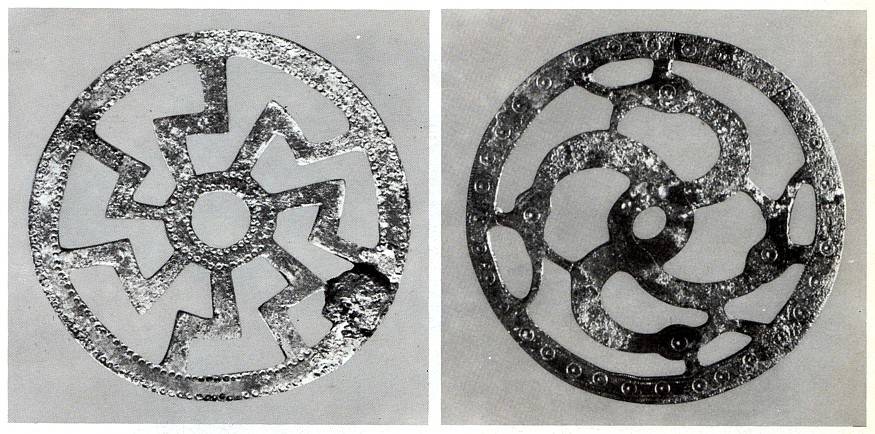
The Black Sun has inherited a more cultish, esoteric and mystical meaning alongside other Nazi and far-right symbols. It continues to rise among white nationalists, far-right groups and neo-Nazis as an alternative to the infamous swastika and is becoming more symbolically significant with each passing year. (Source)
5. The New Era of Hate
These symbols endure to this day not just by the devastating impact of the ideology they are now associated with, but by their continued use and adaptation by modern movements. Neo-nazi, far-right and white nationalist movements alike maintain a grip on the perceived meaning of many of these symbols. Though other modern movements lay claim to these symbols and fight to reclaim them from the grip of hate and bigotry, it is a very difficult fight. These movements are seeing a renewed vigour as their ideologies rise in much of the Western world, and are becoming an increased security threat to numerous countries.
The nature of modern far-right movements is one of much less direct presence in governments and representation. Though parties such as the AFD in Germany, Law and Justice in Poland and Vox in Spain are visible gains in political representation, far-right extremism has a much more pronounced presence as non-state actors. Mass shootings, death threats and planned assassinations are just a few of the ways far-right extremism makes its presence known. Within the myriad of these groups, Norse and pagan symbology continues to be a mainstay of movement iconography and aesthetics across the West.
5.1. United States
Within the United States, numerous neo-Nazi movements take on pagan or heathen symbols as part of their symbolism. In Detroit, the Neo-Nazi National Socialist Movement began to feature the Othala rune on their flag, demonstrating a continued co-opting of ancient Nordic iconography. (Source) The use of the Sig rune in SS imagery, as well as the Tyr rune, continues alongside Black Suns and Swastikas in neo-Nazi movements in the US. (Source)
The continued presence of hate groups like the Aryan Nation, American Nazi Party and KKK means many of the symbols already taken hostage by extremist movements will be difficult to reclaim.
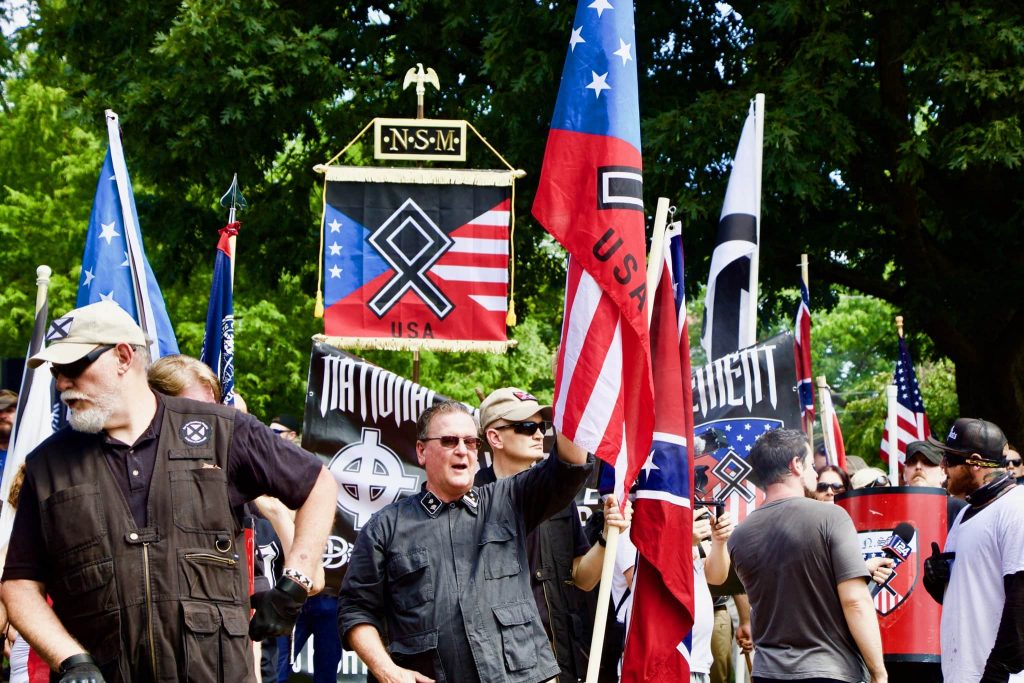
5.2. Europe
In Europe, the threat of far-right and neo-Nazi movements is on the rise in all countries. Though these movements have limited political representation, they have visibly presented a threat to the national security of multiple countries through their paramilitary and terrorist actions.
Germany has been forced to disband an entire company of the KSK after it was found to have many neo-Nazi supporters within its ranks. (Source) Germany also faced the assassination of a regional politician, an attempted synagogue mass shooting and even the Bundestag being attacked by a violent mob, all motivated by far-right and neo-Nazi rhetoric. (Source) Other countries around Europe also face the threat of domestic violence as far-right groups gain increased traction. Within many of these extremist groups, old Nazi iconography, as well as co-opted pagan symbols continue to appear.
6. On the Battlefield
Domestic terrorism is not the only avenue through which far-right violence occurs, with battlefields and civil wars becoming a continued theatre for far-right extremism’s expansion. One of the most notable examples of this is the ongoing conflict in Ukraine.
The Azov Battalion, a neo-Nazi unit in the National Guard of Ukraine, has gained immense controversy over its use of runic, Nazi and ancient iconography related to far-right extremism. (Source) The group has used the Wolfsangel and Black Sun, particularly in a number of their flags and patches. The Wolfsangel is an ancient rune and heraldic charge, used prominently by the Germanic pagans, 17th century Germany and eventually the Waffen SS. (Source) This use of ancient iconography is likely to continue as nationalist and far-right movements grow, with a national, ethnic and historical identity all being crucial points of contention.
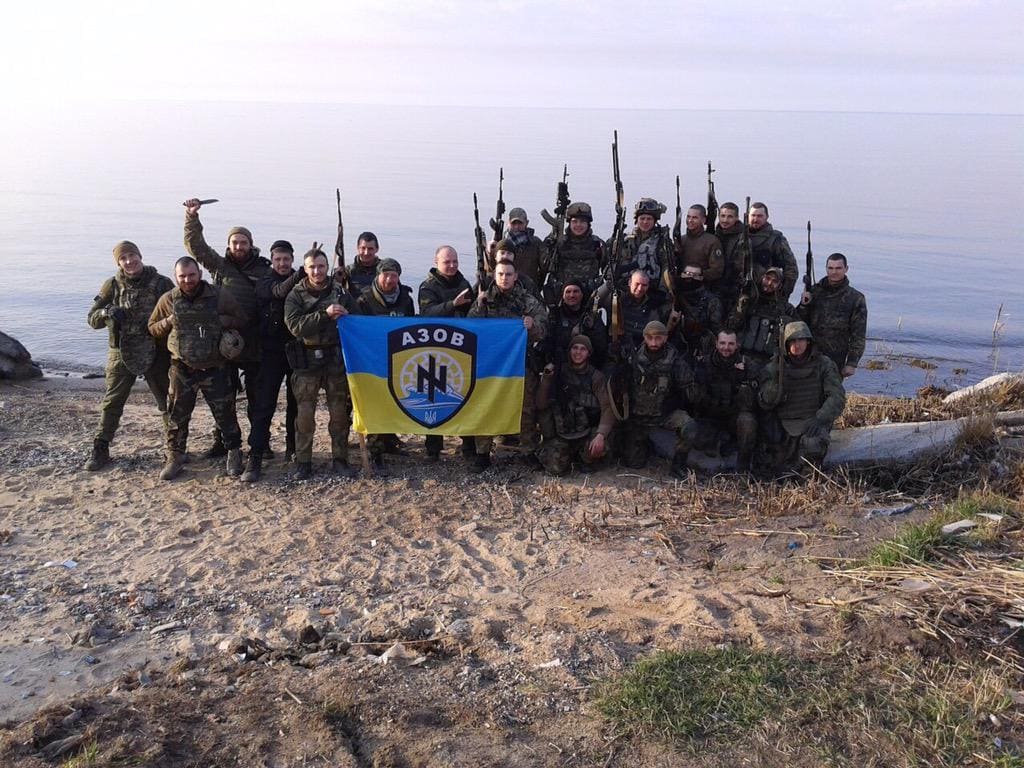
7. Neo-Paganism: Foe and Friend
As neo-Nazi and far-right groups maintained the symbols of ancient runes, sun wheels and other co-opted iconography, so too did the original bearers of these symbols. Neo-Paganism in the West is still alive and well, with different groups across the US and Europe seeking to examine more ancient religious beliefs. (Source) The neo-Pagan groups have found themselves both in a negative and positive alignment with neo-Nazi and far-right groups.
7.1 United in Identity
Neo-Paganism has taken many forms in the modern world. For some, the appeal of ancient mysticism and ritual draws them, for others, notions of kinship and identity become their beacons.
For some modern pagans, particularly ones worshipping Nordic or Germanic religions, the connection to ethnically European people can be a critical component of their connection to the ideology. When this becomes a major point of connection, the ideology can quickly overlap with or find a common interest with far-right and neo-Nazi movements. (Source) One such example is the Asatru Folk Assembly, a Neo-Volkisch movement in the US, that believes that only people with ancestral roots in Northern Europe should be able to practice pre-Christian Norse and Germanic religions. (Source)
The Asatru Folk Assembly visibly use Viking, Nordic and Germanic symbolism in their iconography, and see themselves as a continued version of Volkisch movements from Germany. The overlap in iconography, ethnic ideology and perceived cultural commonality have caused them to align with a broad range of other far-right and neo-Nazi movements. (Source)
7.2. Blood and Soil
Nordic and pagan iconography is also adopted by a third, yet equally intertwined political movement, eco-fascism. Eco-fascists are primarily concerned with environmental preservation and white nationalism and have substantial usage of and interest in Nordic and pagan iconography. (Source) Paganism’s close ties to nature and its preservation give the ideological overlap required for the movement to align with neo-Paganism. Meanwhile, far-right extremism presents an overlap in ideas surrounding ethnic identity and the necessity of violence.
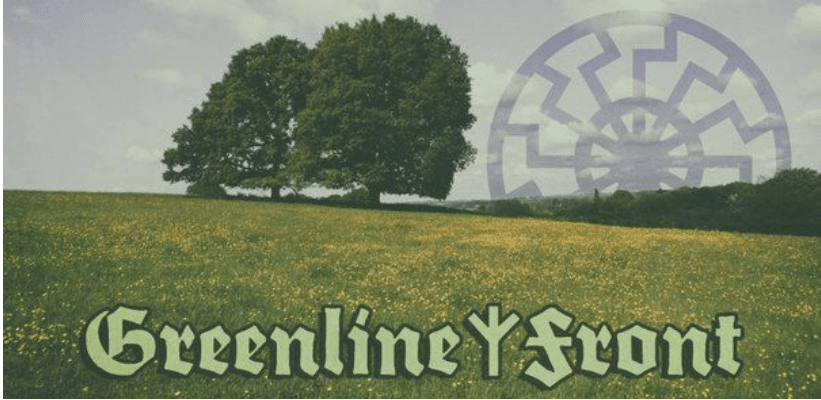
7.3. Defiant Towards Hate
With its rise and continued violent tendencies, far-right and neo-Nazi movements are not at all without their opposition groups. Neo-Pagan movements seeking to reclaim symbols and iconography taken hostage by far-right groups present both a practical and ideological opposition to hate groups using such symbols.
Though symbols like the Sig, Tyr and Othala runes and Black Sun continue to be used by these extremist groups, these are neither exclusive to nor original creations of these groups. For many of these symbols, their original meaning is not lost to those who still practice the religions that consider them sacred. These opposition groups try to change the association with these symbols by tying them back to their original religious or cultural meaning before it was co-opted. (Source).
8. Conclusion
Unfortunately, the association that the ancient runes and symbols have with far-right and neo-Nazis is strong, and extremist groups draw lots of attention in media and politics. Groups that positively encourage exploration of these symbols’ origins are, however, one of the best sources of opposition, and potential reclamation.
The usage of Nordic and pagan iconography by the far-right and neo-Nazi movements will likely continue for a long time. The ideologies are rooted in concepts of European nationalism, ethnic identity and cultural roots, and as they look to the past for inspiration, they also twist symbols to suit their needs. Reclamation of these symbols is possible, but it will not happen overnight.

